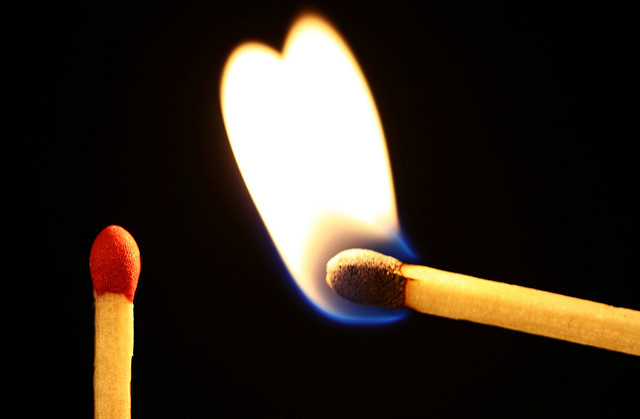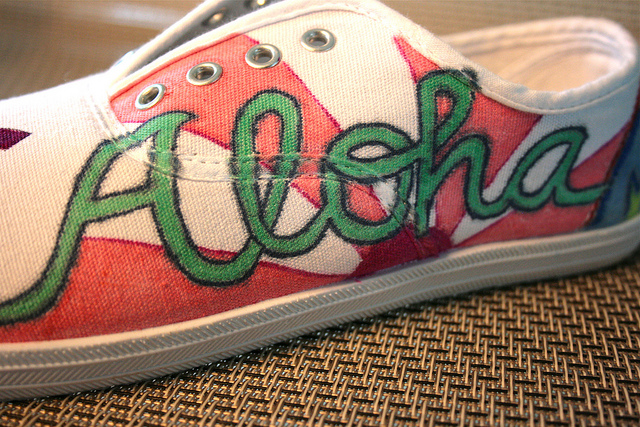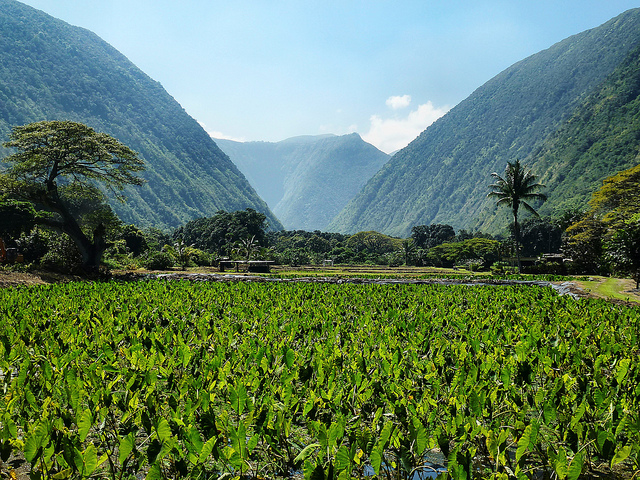
IN GIVING WE TRUST
I was listening to a soon-to-be ex-tenant of mine ranting on about how the past two years of her life spent on a little island in the Pacific that the P.C. (Politically Correct) crowd touted as the dream place to live had been most unsatisfactory.
Her body held rigidly erect as she stood flat-footed on the ground, she had thrown down her bandana and was giving up. “Going home,” she said. “I’m going home.”
And then there was a truly heartfelt cry. “Where’s the ah-low-haw?” she blared.
I thought back on our relationship of the past six months and could not even begin to explain to her that her habit of following Mark Twain’s snarky definition of the “Diplomacy Principle” – give one and take ten – might be at the heart of her difficulties in moving gracefully through the life here in the islands.
It got me to thinking on the issue of generosity and the dance of give-and-take that smooths the way for some folks here and frustrates the expectations and hopes of so many others.
THE THING ABOUT ALOHA
There’s a lot of hoopla and hoo-hah about the concept of “aloha.” Poetic metaphors and sappy slogans abound.
There have even been government-sponsored public relations campaigns aimed at mitigating what some smarty-pants see as a diminishing of an important “asset”….as if the whole thing is a commodity that can be bought and sold.

The basic “reciprocity” thing is all about “you scratch my back, and I’ll scratch yours.” That is not aloha. That’s a trade agreement. It could also be a pathway to collusion and conspiracy. As a way of living it tends to get as clunky as a hula danced by a robot.
The YouTube video above, “ASIMO Does the Hula” was published in 2007 by NorthIdaho Dad. ASIMO was the humanoid robot created by Honda in 2000. It was touted as the most advanced robot of its kind back then.
The video was a performance at Disneyland’s Innoventions display. ASIMO is currently on display in the Miraikin Museum in Tokyo, Japan.
IT GOES BACK TO CARING AND TO THE LAND
Old-style Hawaiians had a very different take on the generosity thing, it seems to me.
It begins with a concept: ‘aina. The word literally means, “that which feeds.” It is also the word Hawaiians use for “land.”
The land here was bounteous and mostly kind. It fed the people well, if the people took care of it. If they took care of each other and shared what they had and what they produced with one another, life was good. It’s an underlying mindset that is just one of the realities of island life, I think.
I’ve thought on it a bit. Some folks say the Jewish kosher rules about food had a lot to do with dealing with food-spoilage. Many of the dietary rules are practical and pragmatic and encourage the safe handling of food. They were all developed before the advent of refrigeration.
The same holds true in the tropics. Food spoils very quickly without refrigeration. If you killed a pig, you threw a feast and shared the meat with everybody around because there really was no way to preserve it. Three hundred pounds of rotting meat makes a mighty stink.
A tree that produced an abundance of fruit meant that you went looking for people to share in the bounty or faced a mountain of rotting fruit. (It got problematic if all your neighbors had the same kinds of generous trees.)
A plentiful catch of fish could be dried, of course, for the times when the fish were scarce or the sea was rough, but the ocean is always there, and mostly it is kind to those skilled in the arts of caring for and gathering in the abundance. There were always relatives and friends and other people who had no easy access to it and who would appreciate a taste of the sea.
Taro fields produced large quantities of food if the land was well-tended – much more than one extended farmer-family could consume.

And if your hands are free and your heart is open, well…the people around you tend to give things to you as well. Why not? They have more than enough their own selves.
It works better that way.
You malama (care for) the land that feeds you and you malama the people around you because if the land and the people continue to prosper, so do you. This is the hidden meaning, the kaona, in the word “aloha.”
THE SHARING HABIT
This habit of sharing is ingrained in the island culture. It’s pretty much unconscious, it seems. You give and what goes around comes around. It makes a circle of goodwill that is inclusive and that keeps expanding as more folks come and join in the dance.
Immigrants came from many other places. Many of them were worker-people brought in to toil in the fields of plantations, large and small. They were poor folks and they knew about hard. They also understood about having to depend on the goodwill of neighbors and strangers for their own survival.
The land was giving and the new people, too, joined in the circle of sharing that was already established, and so it went. They survived and many of them thrived.
The sharing – the thing we call “aloha” — is not about giving with the expectation of getting back something from the person you gifted. You give because you know that in the giving, somewhere down the line, when you need it, somebody else will be there to give you what you are needing.
It is about trusting that together we all can make an abundance that we can keep growing.
It is a hard thing to explain to others who see the whole dance as a zero-sum game, where the resources are limited so you have to grab as much as you can as fast as you can or you will end up with nothing. It isn’t the same as “if you get more, I get less.”
MALAMA THE ‘AINA
I got to thinking about all this again when I ran across this video, “Molokai Words of Wisdom,” that was put together by Molokai filmmaker Matt Yamashita and his Quazifilms Media using snippets from other videos he’s made.
It holds the thoughts of a number of elders and passionate younger people who live on the island of Molokai, where I grew up. Among other things it is an attempt to explain about what it means to “malama,” to care for the land and to care for each other. It is most beautiful.
Matt was raised on Molokai and after receiving his BFA from Chapman University, he came home to become the island’s first professional filmmaker. With a small budget and limited resources, he’s been producing hit-the-heart documentaries and videos since 2001.
His list of clients reads like a who’s who of folks who are working on preserving the ancient wisdoms. Among them have been the Polynesian Voyaging Society, OiwiTV, University of Hawaii, Queen Liliu’okalani Children’s Center, Kaho`olawe Island Reserve Commission, Pacific Islander’s in Communication, First Nations Development Institute, Departure Films, Notional, Gaia, Sacred Lands Film Project, Mill Valley Film Group, Protect Kaho’olawe ‘Ohana, Honua Consulting, Pacific American Foundation, Hui Ho’oniho, Tau Dance Theater, Edith Kanaka’ole Foundation, Hui Ho’opakele ‘Aina, Na Pu’uwai Native Hawaiian Health Systems, Molokai Community Health Center, Ala Wai Watershed Association.
The list also includes assorted government and media groups like Maui County AHEC, Hawaii State Department of Health, Hawaii State Department of Land and Natural Resources, Hawaii State Department of Agriculture, and KITV, KHON, KGMB, and KHNL news stations.
Check out his other videos on his You-Tube channel. They are amazing….
Here’s a poem:
HISTORY
It’s said we are all
By our history defined.
All the people before us,
The panoply they made,
The great and winding parade,
Continues onward, onward in us.
Some say we are doomed
To repeat the mistakes of
All the ones who’ve gone before.
Others say we will transcend
The Was and do another thing
That never before was seen.
I’m not sure that either side
Has the right of it.
I say we will do what we do as we do it,
Just like those ones of old,
And in the tomorrows before us
The consequences will inexorably unfold.
Let us pray those consequences
Are good ones….
by Netta Kanoho
Header picture: “Sharing” by Josh Harper via Flickr [CC BY-NC-ND 2.0]
……
SOME OTHER POSTS TO EXPLORE
(Click on each of the post titles below and see where it takes you….)
……
Thanks for your visit. I’d appreciate it if you would drop a note or comment below and tell me your thoughts.
16 thoughts on “IN GIVING WE TRUST”
Such a pleasure to read for anyone who loves word play and is passionate about language and art. I like your style of writing, although I found it a little hard to follow what the post is about.
The only thing I would suggest that might assist readability for people like myself, is maybe adding a brief introduction in the first or second paragraph on what the article will be about. A few more subheadings may be helpful as well. Hope this helps, best of luck to you.
Hey AngieJewels:
Thank you for your visit and for your take on my post. I am going to need to look at it again.
Please do come again.
Great post! I love the sentiment, and it aligns nicely with how I try to live my life.
It is interesting how some people seem to have an innate desire to give, but some are programmed to take. I think of myself as being in the former camp, so I have discovered I need to be careful around those in the latter.
So, do you think it is possible for people who are primarily “takers” to learn how to become selfless “givers”, meaning to give without expectation of something in return?
Hey Will:
Thanks for your visit and your comments. One of the best books I’ve read on the spectrum of human generosity and the whole give-and-take dance is Adam Grant’s GIVE AND TAKE: A Revolutionary Approach To Success. It explains the dynamics of givers and takers in the world very well (and gives great pointers on how to do the dance gracefully without harm to yourself or others.)
My own thought is that there are levels in the spectrum of any human trait and there are those who are incredibly selfless and others who are notably not. Most of us are not so extreme and we can, I think, work with each other to make giving a default option in our lives.
My own feeling is that if we hang with other people who are more generous than not, it’s more likely that our own generosity will be better appreciated and rewarded. The trick is getting good at finding those other generous people.
The book does help you understand the dynamics better, I think, and gives you many examples of how you can find a fit for your own level of generosity.
I especially loved the poem and the video about Molokai. So deeply grateful for your musings, your writing and you, Netta.
Merely the stewards. Good reminder.
Generosity for me, thanks to Maui teaching me so much, comes with less and less attachment. Palms up, freely giving what I can.
Blessings to your friend that you opened the piece with as well.
Hey Jake:
Thanks for your visit and your kind comments. I do appreciate them. Hugs!
Hi Netta
Amazing post and how it warmed my soul this morning when I read it
We give not to get- We give to send our “Aroha” Aloha to people in our world.
Without expectation, we give freely and feel blessed inside by our giving. This is the gift you so beautifully speak of in this post
I can feel the amazing warmth from you and thank you- This is my blessing for today
Thank you so much for the blessing and for your visit, Vicki. I do appreciate it.
Please do come again.
Hello Netta, I must say that this article is very helpful and informative.
I really enjoyed watching a video above. I am glad you shared it with us as I did not hear about it before.
I really like to give instead of taking. I feel so happy when I give. At that moment I feel blessed.
Thank you for such an inspirational piece of text. I can’t wait to see more.
Danijel, thanks for your visit and for sharing your thoughts. I do appreciate it. I’m glad you enjoyed the post.
Please do come again.
I don’t know if this was the case with your ex-tenant, but there are some people who keep moving from place to place when the problems they’re trying to solve aren’t location-specific.
My mother was like that. Every time she had an unpleasant experience somewhere, like rude people, she would talk about how happy she would be when she finally moved away from there.
She didn’t want to hear that you encounter nice people and nasty people everywhere.
Most of the planned moves never materialized, but the main reason for that was lack of money.
Thanks for your visit and for sharing your story, cpascal.
I have known people like your mother as well. (Actually, some of them are my relatives!) They do seem to be willfully blind, but perhaps it is just that they never learned to develop other ways of seeing. I always feel sad for them.
Please do come again.
Thanks – this was a well-written, interesting and fun read. I find it fascinating to experience and understand other cultures and ways of thinking.
I like the many good things you shared with us. Sharing with each other and caring for the land which helps to care for you while growing together.
Thanks again for the great read.
Daniel, thank you for the visit. I’m glad you enjoyed the post.
Please come again….
I always loved that dance, ALOHA DANCE. For some reason, I get a feeling of relaxation and joy [ don’t get me wrong, I did not dance that often, only occasionally].
And also, GOOD JOB ASIMO! I can’t believe that I did not seen Asimo dancing until now, that was so satisfying to watch.
Thanks for your visit and for sharing your thoughts, Johnny. (You’re right…for a clunky robot, Asimo did really well at the hula.)
Please do come again.